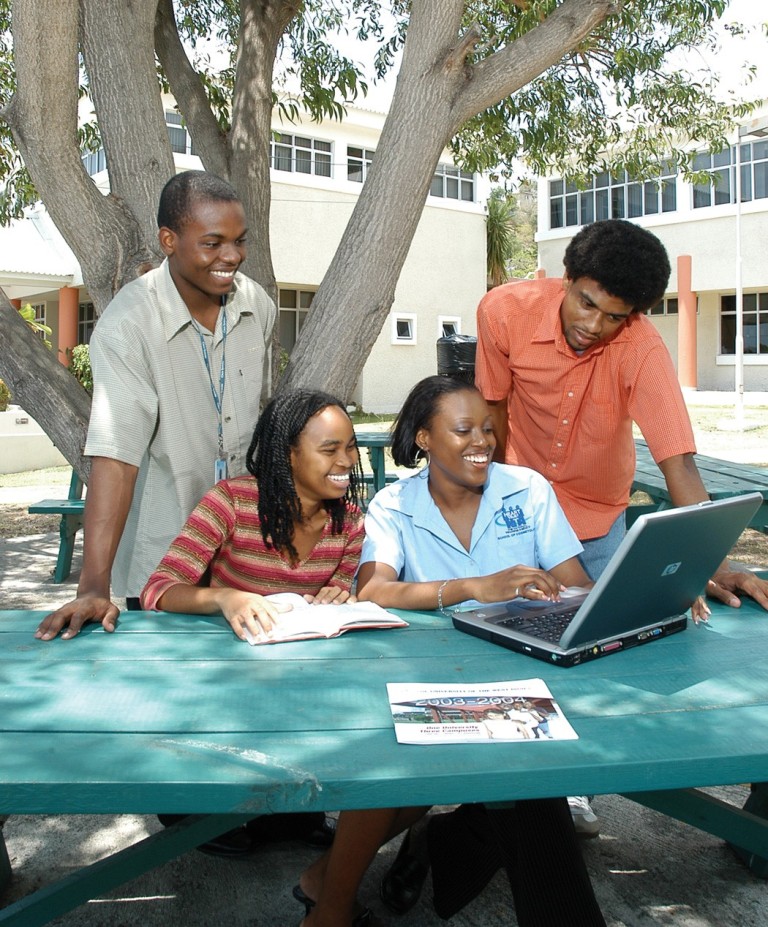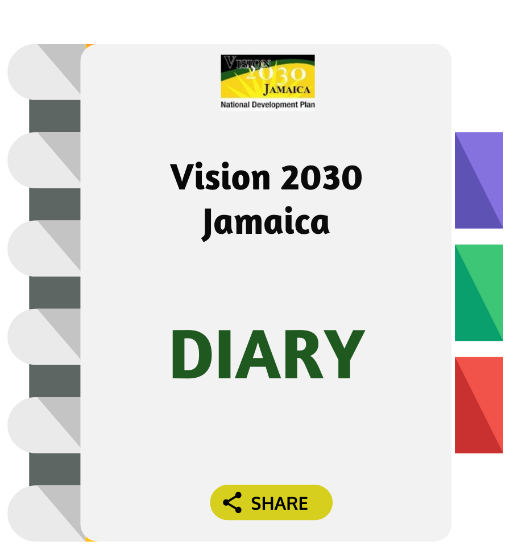Blog
Computer And Internet Access Among Students At The Primary And Secondary Levels (November, 2020)

Computer And Internet Access Among Students At The Primary And Secondary Levels
By Caren Nelson[1], November 2020
In March of 2020, the Government of Jamaica (GOJ) suspended face-to-face classes as part of measures to control the spread of COVID-19. By the end of the 2019/2020 academic year, face-to-face classes had been suspended for more than six months. Physical classes were further suspended at the start of the 2020/2021 school year, and the Ministry of Education, Youth and Information (MOEYI) issued broad guidelines for remote learning. These included:
- Online teaching through Google Learning Management System
- On-air broadcasts via radio, television and the Internet (YouTube)
- The distribution of learning kits, textbooks, practice books and workbooks to students in rural areas
- The provision of apps, free of cost, for students’ use
- Textbooks and e-books for students at the secondary level, and
- The distribution of computer tablets, meals, and financial assistance to needy students.
It is generally understood that not all children were able to attend virtual classes. However, there is no clear indication of the number of students affected.[2] Using data from the 2017 Jamaica Survey of Living Conditions (JSLC)[3], supplemented by data from the Office of Utilities Regulation (OUR), this paper is aimed at estimating the impact of COVID-19 on students at the primary and secondary levels[4] by providing baseline data on access to a computer device and the internet in their homes. Access is used as a proxy for participation in online education. It is recognized that the data do not coincide with the period of interest; therefore, the data and analysis are indicative and not conclusive.
The paper gives focus to two groups— households with children in primary school and households with children in secondary school. The data indicate that the majority of households in both groups had access to the internet. However, approximately half of households with children in school in both age cohorts did not have any computer — an estimate of about 230 000 children. Overall, tablets were the most common type of computer device among those who had a device. This may be due to the relatively lower price of tablets viz-a-vis laptops and desktops.[5] The JLSC data do not allow for estimation of mobile phone possession among individuals. However, data from the Office of Utilities Regulations (OUR) show high mobile phone penetration.
The majority of households that had a computer also had internet access. This ranged from two-thirds for households with students in primary school to over 90.0 per cent for households with students in secondary school. This was so across all regions, quintiles and by sex of household head. Nevertheless, looking at all the households with children in the two age groups, the JSLC data suggest that the connection to the internet was via mobile phone for the majority of households. It is through this means that many children in school would have gained access to the internet and, by extension, access to online learning and assignments. The data distinguish between mobile broadband via handset and mobile broadband via card or USB modem. In all categories, mobile internet connection was, for the majority, via a handset, that is by way of data plans. The OUR data show that total mobile phones exceed Jamaica’s total population, therefore, it is a reasonable assumption that many school-age children have their own phones.[6] However, funds to purchase data for sustained class attendance is undoubtedly a challenge for some.
Differences in access to the internet and computer devices were evident mainly by socioeconomic status and, to a lesser extent, by region. In both groups, the proportion of households in the wealthiest 20 per cent that had a working computer was roughly three times that of households in the poorest 20 per cent. Also, close to three-quarters of the poorest households did not have a computer, with the proportions (with no computer) declining as average consumption increased. Similarly, although upwards of two-thirds of households had internet access, a notable increase could be observed moving from the poorest to the wealthiest, for both age groups. The differences were particularly evident among households for which annual average consumption was below the poverty line (poor households). Approximately one-fifth of poor households had a working computer, which was below the overall average for households with school children in the two age groups. More important, however, is that approximately 4 out of 5 poor households with children in school did not have any type of computer device (desktop, laptop, or tablet). This was so at both the primary and secondary levels. A little less than half of poor children had no means of accessing the internet in their homes and, by extension, online classrooms.
With respect to regions, for both age groups, there was no significant difference in the proportion of households with a working computer (except in the case of the 6–11 years age group, for which Other Urban Centres registered close to 10.0 percentage points above the country average). However, among these households with a computer, larger proportions in Rural Areas and Other Urban Centres, did not have access to the internet compared with Greater Kingston Metropolitan Area households.
The data show that a larger proportion of female headed households had a computer. However, when disaggregated by households with children in school, more male-headed households had computers than female-headed households, in both age groups. Generally, female-headed households are larger and have more children than male-headed households. Therefore, a larger proportion of children would be negatively affected by the lower computer possession among female-headed households.
Numerous studies have shown that learning loss tends to be highest in mathematics and reading. Among those worst affected are poorer children and children whose mother tongue differs from the language of instruction (Entwisle and Alexander, 1992; Cooper, et al, 1996). There is also evidence that “children learn best when instruction is continuous” (Cooper, 2003). The body of work on learning loss suggests that there may be some yet-to-be determined learning loss suffered by Jamaican children — especially those from poor homes — due to the extended break in schooling that they may have experienced after March 2020.
[1] Director, Research Coordination Unit, Planning Institute of Jamaica (PIOJ)
[2] Since 2021, the Ministry of Education, Youth and Information has estimated that about 120 000 school children have not attended classes since March 2020.
[3] This was the latest publication of the JSLC at the time of data analysis
[4] Although the importance of education at the early childhood level (ages 3–5 years) is recognized, the focus is on children 6–18 years, as a crucial age range in the abnormal circumstances engendered by the pandemic.
[5] Under the Tablets in Schools Programme, which began in 2013, at least 26 000 tablets were distributed to teachers and students in some schools. Some of these may still be viable. A new programme was announced in late 2020, under which 65 000 tablets would be distributed to teachers and children at the infant and primary levels.
[6] Multiple phones among the adult population is not uncommon, so the distribution of phones cannot be considered universal.



